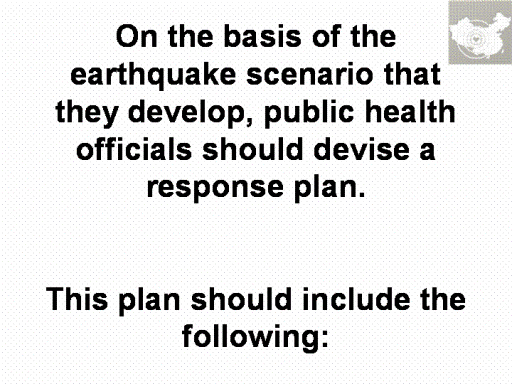| front |1 |2 |3 |4 |5 |6 |7 |8 |9 |10 |11 |12 |13 |14 |15 |16 |17 |18 |19 |20 |21 |22 |23 |24 |25 |review |
 |
-
recommended actions for individuals to take during earthquake
shaking
-
instructions for evacuating buildings after the shaking has ceased
(or during the earthquake itself if easy and safe to do so)
- a
list of safe sites where people living in areas threatened by
landslides during secondary tremors could be relocated
-
means of caring for young, elderly, sick, or infirm people
-
procedures for the safe shutdown of any machinery or processes
-
procedures for extinguishing any potential fire sources and making
hazardous situations safer
- a
protocol for checking personnel and accounting for any missing
persons
- a
plan for dispensing first aid and dealing with distressed people
-
procedures for checking and reporting damage
-
damage limitation measures
-
procedures for informing the workforce of whether and when it is
safe to return to work or go home
Because there never are enough rescuers or medical providers in
major disasters, communities vulnerable to earthquakes should
establish ongoing programs to teach the public what to do when an
earthquake occurs, such as first aid education, basic rescue
training, fire drills (15).
Simulation exercises can be carried out jointly by volunteer
groups, local fire brigades, and hospitals.
This training also might help to improve bystanders'
responses during everyday emergencies.
|